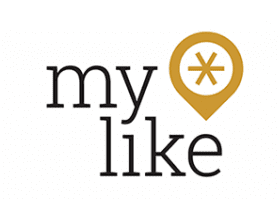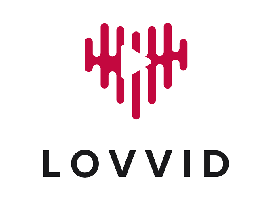What belongs in a specification sheet for an IT project and how do I formulate it?
– A guide. –
A specification sheet is an essential document for the start of an IT project. It describes the client’s requirements, goals and expectations for the project. A clearly structured and well-formulated specification forms the basis for successful collaboration between the client and the development team, as it serves as a guide and reference for the entire project.
This guide provides you with an overview and examples of the structure and content of a specification sheet for an IT project.

Content
1. purpose and aim of the specifications
The specifications define:
- What is to be achieved (requirements and objectives of the project).
- Why the project is being carried out (client’s objective).
- For whom the project is being realized (target group).
Example for the introduction: “The requirements specification describes the requirements for the development of a new software solution for the automation of business processes in area X. The aim is to increase the efficiency of processes and improve user-friendliness.”
2. structure and organization of a specification sheet
A good specification follows a clear structure. It helps to make the content clear and easy to understand. The typical structure of a specification sheet is as follows:
- Introduction
- Objective
- Actual state
- Target state
- Requirements for the system
- General conditions and constraints
- Functional requirements
- Non-functional requirements
- Use cases and user groups
- Interfaces and dependencies
- Scheduling and milestones
- Budget and resources
- Appendix
3. detailed contents of a specification sheet
3.1 Introduction
The introduction describes the general context of the project and the reason for its implementation. It briefly outlines the purpose of the project and the intended goal.
Example: “This specification serves as the basis for the development of a web application that is intended to optimize internal communication within the company.”
3.2 Objective
The objective explains which overarching goal is to be achieved by the project. You should define precise and measurable goals here.
Example: “The aim of the project is to develop a web application that makes internal communication at least 20% more efficient by providing a central platform.”
3.3 Current status
This is where you describe the current state of affairs. It is about analyzing the existing system or process and identifying the weak points.
Example: “Communication within the company currently takes place via various channels such as email and instant messaging, which leads to fragmentation of information and inefficient document storage.”
3.4 Target state
The target state describes what the situation should look like once the project has been successfully implemented. It should be clear here what improvements and changes are expected.
Example: “The planned web application is intended to provide a central platform for all employees that simplifies communication processes, enables structured document storage and increases transparency in projects.”
3.5 Requirements for the system
This is where you define general requirements for the system or solution. This includes technical, organizational or content-related requirements.
Example: “The system must be web-based so that it can be used on different devices regardless of the platform. There should also be LDAP integration for user administration.”
3.6 General conditions and boundary conditions
In this section, you describe the framework conditions that must be taken into account during implementation. These include legal requirements, standards and technical limits.
Example: “The solution must comply with the GDPR guidelines and run on the company’s existing server structures.”
3.7 Functional requirements
The functional requirements specify the functions that the system must offer. These are the core functions of the planned solution.
Example:
- “The system should offer a chat function for all employees.”
- “There must be calendar integration to coordinate appointments.”
- “Documents must be able to be uploaded and categorized in the application.”
3.8 Non-functional requirements
Non-functional requirements define qualitative requirements, such as performance, user-friendliness or security.
Example:
- “The system must support at least 1000 simultaneous users.”
- “The response time when navigating through the system must not exceed 2 seconds.”
- “The system must have an availability of 99.9 %.”
3.9 Use cases and user groups
In this section, describe how different user groups will use the system and which use cases are envisaged.
Example: “There are three user groups: Administrators, project managers and employees. Employees should be able to access the chat and file functions, while administrators have additional rights to create and manage user accounts.”
3.10 Interfaces and dependencies
Here you can list all interfaces to other systems or software solutions that need to be integrated or connected.
Example: “The web application must be connected to the existing ERP system and the central database.”
3.11 Scheduling and milestones
An overview of the planned project steps and milestones helps to define the time frame and pursue the project goal.
Example:
- “Phase 1: Requirements analysis (2 weeks)”
- “Phase 2: Development of the prototype (6 weeks)”
- “Phase 3: Test phase (4 weeks)”
- “Go-live: Q3 2024”
3.12 Budget and resources
In this section you describe the planned budget and the available resources (personnel, hardware, software).
Example: “The project budget is 100,000 euros. Four developers, one project manager and two IT administrators are available for implementation.”
3.13 Appendix
The appendix contains all additional information, such as diagrams, technical specifications, process descriptions or reference documents.
4. formulation tips for the specification sheet
- Formulate clearly and precisely: Use short, concise sentences to avoid misunderstandings.
- Explain technical terms and abbreviations: If you use special terms, make sure that they are clearly defined.
- Measurable goals and requirements: Formulate requirements and goals in such a way that they are measurable and verifiable.
- Avoid assumptions: Every requirement should be formulated clearly and without room for interpretation.
5. common mistakes and how to avoid them
5.1 Unclear or incomplete requirements
A common problem with requirement specifications is the use of vague or incomplete requirements. Statements such as “The system should be user-friendly” leave a lot of room for interpretation and can lead to misunderstandings.
Solution: Formulate requirements as precisely as possible and, where appropriate, supplement them with measurable criteria. Example: “The user interface must enable a first-time user to understand the basic functions within 5 minutes.”
5.2 Lack of prioritization
Without a clear prioritization of requirements, there is a risk that unimportant functions will tie up too many resources and critical aspects will be neglected.
Solution: Use a prioritization method such as MoSCoW (Must-Have, Should-Have, Could-Have, Won’t-Have) to evaluate the importance of the requirements.
5.3 Focus too technology-centered
A specification sheet should not only contain technical details. The focus should be on the business objectives and the user perspective.
Solution: Combine technical specifications with descriptive use cases and explain how the system supports the business objectives.
6. involvement of stakeholders
6.1 Identification of stakeholders
It is important to identify all relevant stakeholders for a complete specification. This includes end users, management, the IT department and external partners.
Solution: Create a stakeholder list of all those involved and clarify their requirements and expectations of the project.
6.2 Workshops and interviews
Stakeholders can be involved through workshops, interviews or surveys in which requirements are collected and prioritized. This form of collaboration helps to make the requirements more realistic and complete.
Solution: Plan regular feedback rounds to ensure that all stakeholders can contribute their perspectives.
6.3 Coordination processes
A specification sheet is a living document that is frequently adapted. Ensure a clear coordination process to make changes transparent and comprehensible.
Solution: Use collaboration tools to manage versions and document feedback.
7. testing and validation of the specifications
7.1 Internal audit
Before passing on the specifications to external partners or service providers, the document should be checked internally. This ensures that the requirements are realistic, complete and correctly formulated.
Solution: Organize an internal review by experts from different departments to avoid blind spots.
7.2 Test for feasibility
Not all requirements can be implemented technically or economically. Early validation by the IT department or external experts can avoid problems later on.
Solution: Carry out feasibility analyses and technical reviews before the project is launched.
7.3 Feedback from potential users
If possible, the future users of the system should evaluate the specifications to ensure that the requirements described meet their needs.
Solution: Provide mockups, prototypes or simple diagrams to get feedback on usability and functional requirements.
8. conclusion
A well thought-out and clearly formulated specification sheet is crucial for the success of an IT project. It creates transparency and ensures that everyone involved understands the requirements and objectives of the project.
BITS GmbH will be happy to support you in creating a professional specification sheet and help you to plan your IT projects efficiently and implement them successfully. Contact us for detailed advice and support.
GET IN TOUCH WITH US
“We are happy to support you in the creation or implementation of your specifications. We look forward to hearing from you.”
Marc Schallehn, Managing Director BITS GmbH
Email: [email protected]
Phone: +49 (0)89 121 585 50

Gerne unterstützen wir Sie bei Ihren IT Projekten. Ich freue mich über Ihre Kontaktaufnahme.
OUR CUSTOMERS AND PARTNERS
OUR CUSTOMERS AND PARTNERS
Gemeinsam, zuverlässig und langfristig wollen wir als IT-Dienstleister Sie bei Ihren IT-Vorhaben unterstützen. Eine Auswahl unserer Kunden, Partner sowie Branchen finden Sie in diesem Abschnitt.













































